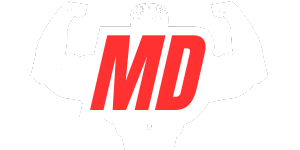Bodybuilding is a popular fitness regimen focusing on developing muscle mass and strength through resistance training. Beyond the aesthetic benefits, bodybuilding can enhance overall physical health, improve mental well-being, and boost self-esteem. However, many misconceptions exist about bodybuilding, particularly its impact on height.
This article aims to dispel common myths about bodybuilding and height, providing a clearer understanding of their relationship.
Understanding the Basics
Bodybuilding is a form of exercise that emphasizes hypertrophy—an increase in muscle size. The primary goals include enhancing muscle strength, improving physical appearance, and promoting overall health. Bodybuilders often engage in structured workout routines that involve weightlifting and proper nutrition to achieve their objectives.
Height is primarily influenced by genetics, but other factors also play a crucial role. Nutrition during childhood and adolescence, hormonal levels, and overall health can impact an individual’s growth potential. Understanding these factors is essential to addressing myths about bodybuilding’s effects on height.
Genetics is the most significant determinant of height, accounting for approximately 60-80% of an individual’s final stature. Family history and inherited traits dictate growth patterns, while environmental factors like nutrition can affect the remaining percentage.
Common Myths About Bodybuilding and Height
Myth 1: Bodybuilding Stunts Growth
One of the most pervasive myths is that bodybuilding and weightlifting can stunt growth in adolescents. This myth arises from a misunderstanding of how growth works.
Lifting weights is believed to place excessive stress on the body, potentially damaging growth plates and hindering natural development.
Growth plates are areas of cartilage located at the ends of long bones. They are responsible for growth during adolescence. As individuals mature, these plates gradually harden and fuse. Proper weight training does not damage growth plates, provided safety measures are observed.

Myth 2: Weightlifting is Dangerous for Adolescents
Another prevalent myth is that weightlifting poses significant dangers to young individuals. Concerns revolve around injuries, improper techniques, and the assumption that adolescents are not physically capable of handling weight training.

While improper form can lead to injuries, supervised weightlifting with proper techniques can significantly reduce risks. Education on correct postures and movements is crucial in ensuring safety.
The Science Behind Growth and Exercise
During adolescence, bones undergo significant changes, including growth in length and density. Exercise, particularly weight-bearing activities, can stimulate bone growth and health. Hormones play a crucial role in growth and development. Testosterone and growth hormone levels increase during puberty, promoting muscle and bone growth.
Proper nutrition is vital for optimal growth. Calcium and Vitamin D are essential nutrients for bone health, and they can be obtained through a balanced diet rich in dairy products, leafy greens, and fortified foods.
Regular physical activity provides numerous health benefits, including improved cardiovascular health, metabolism, and mental well-being. Engaging in a balanced fitness routine contributes positively to overall health.
Safe Bodybuilding Practices for Adolescents
Resistance Training: Benefits and Guidelines for Safe Training
Adolescents can safely train in resistance to build strength and enhance athletic performance. It is essential to start with lighter weights, focusing on mastering the technique before progressing.
Focusing on compound movements, such as squats, deadlifts, and bench presses, can maximize muscle engagement. It’s essential to tailor the training load according to individual capacity.
Working with a certified personal trainer can provide valuable guidance, ensuring safe practices and effective workouts tailored to individual needs. Additionally, a well-rounded workout routine should include resistance training, cardiovascular activities, and flexibility exercises to promote fitness and prevent imbalances.
Addressing Growth Concerns
Growth Spurts
Growth spurts typically occur during adolescence, with individuals experiencing significant height increases. Weight training does not interfere with these natural patterns.
Skeletal Development
Regular weight-bearing exercise, including bodybuilding, can improve bone density and strength, which can improve skeletal health as individuals age.
Exercise Regimen
Balancing exercise intensity with adequate recovery is essential for growth and health. Overtraining can lead to fatigue and potential injury.
Rest and Recovery
Incorporating rest days and ensuring sufficient sleep is crucial for recovery and growth. Sleep is vital for hormone regulation and muscle repair.
Benefits of Bodybuilding Beyond Height
Bodybuilding is highly effective for increasing muscle mass and strength, which enhances physical capabilities and promotes a healthier body composition. By engaging in bodybuilding, individuals can also experience a decrease in body fat percentage, leading to a leaner physique and overall better health.
Furthermore, the discipline and commitment required for bodybuilding significantly contribute to improved mental health, fostering resilience, confidence, and self-esteem. In addition to these benefits, bodybuilding enhances athletic performance by improving endurance and strength, making individuals more competitive in various sports.
Strengthening muscles through bodybuilding helps improve posture and body mechanics, which leads to better movement efficiency and a reduced risk of injury.
Professional Insights
Experts in exercise science affirm that adolescents can safely practice bodybuilding when appropriately guided, highlighting its positive effects on growth and overall health.
Sports medicine professionals emphasize the significance of proper training methods and nutrition in supporting growth and preventing injuries among young athletes. Industry experts recommend incorporating bodybuilding into a balanced fitness regimen, focusing on safety, proper technique, and nutritional support.
Practical Tips for Young Bodybuilders
Adolescents should prioritize injury prevention by implementing proper warm-up and cool-down routines while listening to their bodies. Flexibility training, such as stretching and yoga, is essential for maintaining joint health and overall flexibility.
A balanced diet rich in protein, carbohydrates, healthy fats, vitamins, and minerals is crucial for supporting growth and recovery in young bodybuilders. Staying hydrated is vital for optimal performance and recovery; therefore, young bodybuilders should ensure they consume adequate fluids before, during, and after workouts.
Regularly monitoring progress regarding strength gains, body composition, and overall well-being can help young bodybuilders stay motivated and focused on their fitness goals.
Frequently Asked Questions
What are the benefits of bodybuilding beyond muscle gain?
Bodybuilding provides various benefits, including improved body composition, enhanced mental health, increased athletic performance, and better posture.
What role do genetics play in determining height?
Genetics is a significant factor in determining height, but it does not limit the benefits of bodybuilding for strength and muscle development.
What should parents know about bodybuilding for their children?
Parents should be informed that supervised and properly guided bodybuilding can be safe and beneficial for their children, alleviating any concerns about growth and safety.



